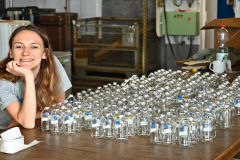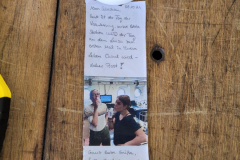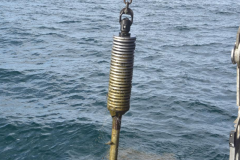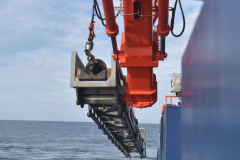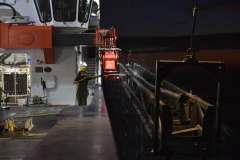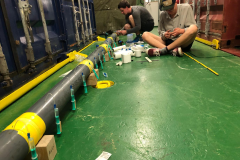
The Benguela System under climate change - Effects of Variability in physical forcing on carbon and oxygen budgets
16.01.-28.01.2022 We drop the covers, eh masks.
We have been on board for a week now and are busy collecting samples. But our doctor on board was interested in completely different samples and so we all went for a PCR test. For a week, we all wore masks on the ship and - where possible - kept our distance from each other. Fortunately, no one showed any signs of a Corona infection and so we were all delighted when our ship's doctor announced in the afternoon that all the PCR tests had come back negative and that we could finally take off our masks and sit next to each other in the mess (dining room). Everyone on board is relieved, because if we had had a positive result on board, we might have had to interrupt our expedition or even end it, depending on the course of the infection. Fortunately, this was not the case and so we can continue our work with even more energy.
Now it was time for the geologists among us to get down to work. The gravity corer, was finally used. This is a long steel tube that is lowered into the water via a special device and sinks to the seabed. A 1.5 t weight is attached to the upper end of this pipe, so that when it hits the bottom, it digs itself up to 10 meters into the seabed. The drill core obtained in this way is then brought on board and examined by geologist Michael Kossack and his two student assistants and sampled for further analysis. In his doctoral thesis, Michael uses the sediment cores from the gravity corer and MUC to investigate how the oxygen concentration in the bottom water above the shallow continental shelf has developed since the last ice age. He is using the environmental behaviour of trace metals such as uranium and molybdenum, which occur in varying amounts in the sediment depending on the oxygen content.
One of the last actions on this transect is the recovery of a mooring station. Between the mooring stone on the seabed and the buoyancy body floating in the water column, different measuring instruments are attached to measure temperature, pressure, salinity, oxygen concentration and current. During the recovery, Sebastian Beier in particular was in for a little surprise in the form of a small message in a bottle, which was left here for him when it was deployed in October 2021. What a nice and funny idea. 
Text: Fabian J., Braun P. (both IOW)
| Expedition: | MSM105 |
| Mission: | BUSUC 2 |
| Start: | 11.01.2022 - Walvis Bay |
| Ziel: | 23.03.2022 - Mindelo |
